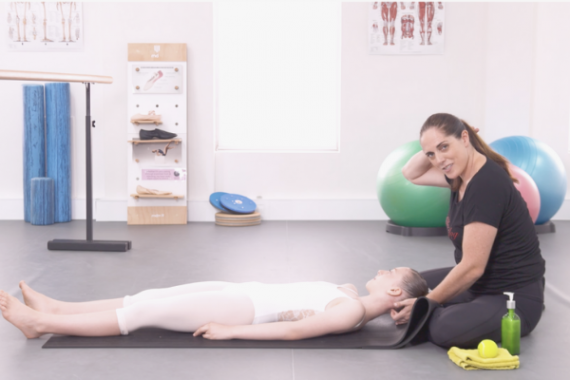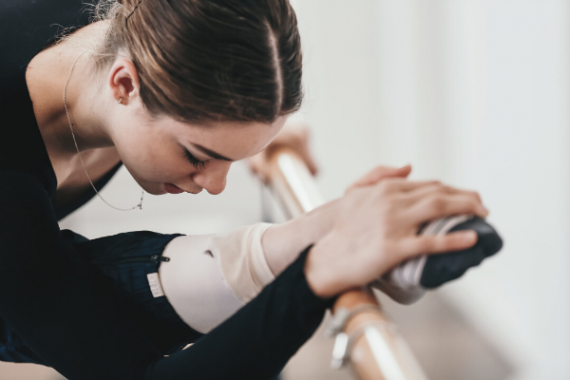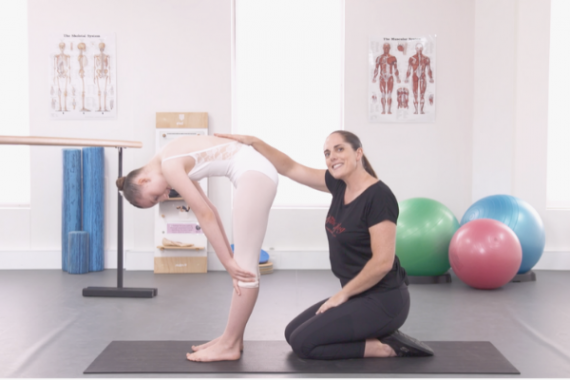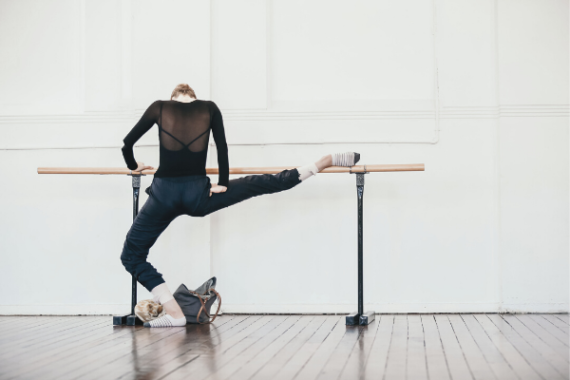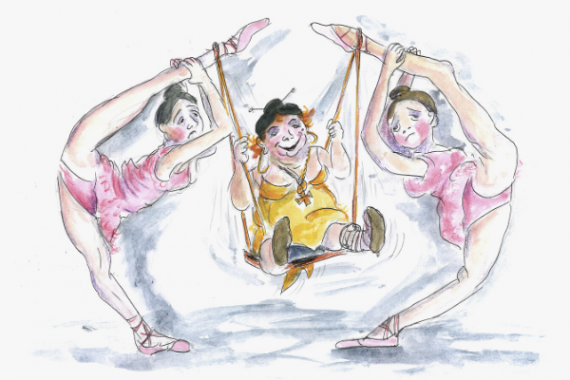- Free Articles
- Shop
- Workshops
- The Dance Educator Series
- L1 – The Fundamentals
- L2 – Pointe Intensive
- L2 – Flexibility Intensive
- L2 – Training Turnout in Tiny Dancers
- L3 – Foot & Ankle Injuries in Dancers – NEW
- L3 – Hip Injuries in Dancers
- L3 – How to Train Extreme Mobility Safely
- Upcoming Workshops
- Workshop FAQ’s
- Workshop Testimonials
- Host Application Form
- Dance Teacher & Health Professional Directory
- Members Areas
- Cart
- My Account
The Ultimate Flexibility Assessment Tool
Flexibility is a multi-faceted beast, and the reason so many dancers struggle with developing their optimal flexibility is that what is right for one person may be the complete opposite of what is right for another.
Learning how to assess yourself on a daily basis, and make smart decisions about what you need to do to resolve this, is essential for a dancer. If you are doing a generalised stretching sequence that has not been tailored to you, you will often put in a huge amount of effort for very little reward.
The ultimate assessment tool for this is a simple Roll Down, but the magic is in focussing on exactly what you feel, and understadning what this means. A Roll Down can help you understand exactly where you are getting restricted, as it is often not actually in your hamstrings! Tension in the nerves, fascia or muscles in the neck, back, hips, or feet can limit your ability to go into a deep forward bend.
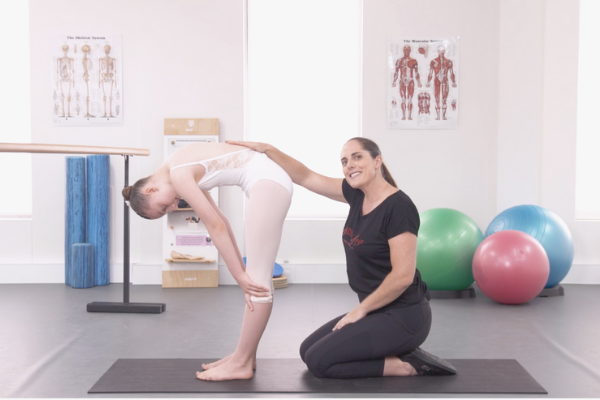
- Perform a slow roll down in parallel, using your hands and your words to indicate and describe any sensations of restriction as you move through the movement.
- This may be done with the knees straight as an assessment test, but if performing as a mobilising exercise will often be safer for the whole class if done with the knees slightly bent.
- At the end of range, note whether the restriction is felt in the hamstrings, calves, sacrum, top of the hamstrings or compression in the front of the hips.
- You may also try placing a small wedge under the heels, or under the forefoot, or bend the knees to further differentiate where the restriction is coming from.
- Repeat with feet turned in and out to check the effect of the deep hip rotators on your mobility into a forward bend.
How you indicate the tension can give you a guide as to what structure may be restricting the movement. Ask your partner to note the quality of movement of the spine as well as the end position. For instance, some dancers will be able to touch their head to their knees, but actually have very little spinal flexion.
- Pointing to a thin line of tension may indicate neural tension. Nerves do not like being stretched, so it is better not to hold on a sustained stretch or push into this kind of restriction. CLICK HERE to learn more about Neural Tension.
- A moving flat palm over a wider area often indicates fascial tension, and will respond well to massage, cupping and fascial mobilisers. CLICK HERE to learn more about Fascia.
- A flat palm or focussed point on one small area may indicate a localised point of muscle tension, and may respond to trigger point release work with a ball. This is the one kind of restriction that may respond to static stretching, but this should not be done before class.
- Pressure on the closing side of a joint may indicate irritation of the joint capsule or structures overlying the joint. Never push into this kind of restriction as it will usually make it worse.
What to do about it!
Depending on where you feel the restriction, and the knowledge that you have about what this means, will guide the techniques you use to improve your range. With any mobilisation technique, remember to treat your nerves like dental floss (sliding), rather than elastic (stretching). Focus on releasing tension in structures surrounding and anchoring the nerves, rather than stretching them directly.
Techniques such as the suboccipital releases and deep calf massage from the Front Splits Fast program may help if it is a neural restriction, while the Hamstring Mobilisers and Thoracic Mobility Sequence from our Level 1 Teacher Training may be more effective if it is a fascial restriction. To learn more about unravelling your mobility in the most effortless and effective ways check out our Online Student Programs or Teacher Training Workshops.
Flexibility Resources
If you are looking to delve deeper into this topic, check out the following programs:
- Front Splits Fast Program: This program translates therapeutic techniques for improving Fascial Mobility and Neural Tension into easy to do exercises that can enable instant changes in your flexibility without the risk of damage through over stretching.
- Level Two Online Flexibility Intensive: If you are a dance teacher, this is the perfect continued education course for you. During this course you will understand the multifactorial nature to flexibility training. You will also explore safe ways of assessing exactly where each individual is restricted in order to create the most effective program.
- Level Three Online Flexibility Intensive on 'How to Train Extreme Mobility Safely': This workshop will help you assess your students in detail and be able to offer them effective techniques in a logical clear order to get them on the way to achieving THEIR optimal flexibility. It is also for teachers who are concerned at the extreme positions young dancers are wanting to work into, as it gives you safe guidelines on how to guide their development.



